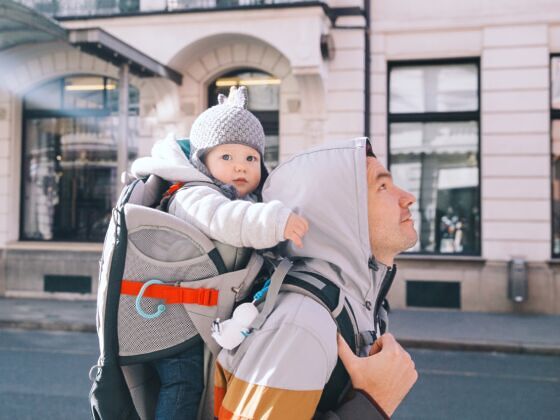A lot of people believe parenthood is the end of the party. The needs of a tiny person can be overwhelming, and it often feels easier to just never leave the house. There’s all that stuff that babies need (or we’re told that babies need), and you hate the idea of traveling with more than just a backpack and a smile.
But there’s no need to let your new addition keep you home. Quite the contrary: babies are portable and often don’t need as much stuff as you’d think. We traveled with our 10-week old daughter Maggie, had a delightful time, and only took one additional piece of luggage–her car seat.
Here are five tips to get you ready for traveling again:
